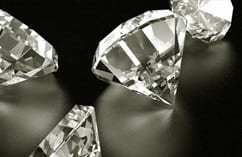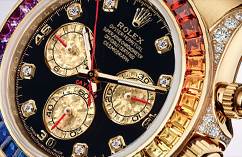You’ve probably heard of many different types of gold, including rose gold, white gold, and traditional yellow gold. But what makes white gold white, if the metal itself doesn’t exist in this colour?
Man-Made Metal
The first thing to know is that it is an alloy, or a metal that is not naturally occur in nature. This means that it is man-made from least two metallic elements, depending on the creator. This combination could be any white metals, such as nickel, palladium, copper, or zinc, mixed with natural gold. White gold is made by taking a set percentage of gold and another metal or metals, and mixing them together.
On its own, pure gold is actually very brittle. As something that gets a lot of wear and tear, jewellery made just of gold warps and breaks too easily. Platinum and palladium make the white color look a little warmer than the other metals. Nickel has historically been used for a wide range of uses because it was durable, it has fallen out of favor for jewellery. Copper also makes the gold sturdier, as well as a bit colder looking than palladium. Zinc is used with most gold alloys to give it a consistent look.
Value of White Gold Alloy
Like all other types of gold, the value of white gold alloy is described in karats. The higher the karats, the more valuable the gold, with 24 karats being the purest at 99.7% of its weight being pure gold.
The metal used to make white gold does not change the percentage of gold, but it can change the appearance. All white gold jewellery has a layer of rhodium metal plating to give it the appearance of gold. Without it, the metal would look not look white. Depending on the second metal, the gold would take on a grayish, brownish, or pinkish hue. With rhodium plating, the final result is a beautiful whitish color.
White Gold Jewellery
With some people having allergies to nickel, an increasing number of jewellery makers avoid using it in jewellery. If you have older jewellery, odds are much better that nickel was used in the making of it. Pins and rings are still make with nickel because it helps to make them sturdier, a quality that is required when pinning them on or using your hands.
As the second most popular type of gold for jewellery, white gold alloy is used for pretty much every possible jewellery type. From earrings and necklaces to brooches and rings to bracelets, you can find pieces of every types that includes this particular alloy. Because all white gold jewellery has a plating of rhodium, it requires replating occasionally to keep the color as rhodium wears off over time. If your jewellery has not been replated, then the piece won’t be as beautiful as it could be. The process to replate is relatively simple and inexpensive.
Do not confuse rhodium plating with gold plating. Gold plating means that the majority of the jewellery piece is made of something other than gold – the gold is just a plating on top of the other metal. Pinto Gold and Jewellery Buyers does not buy pieces that are just gold plated. Check out our list of pieces we do and don’t buy.
If you have questions or would like to learn more about your jewellery, contact us online. Better yet, come visit us in person at 2570 Yonge Street. We can help you discover its value and determine what it is worth if you want to sell it.








